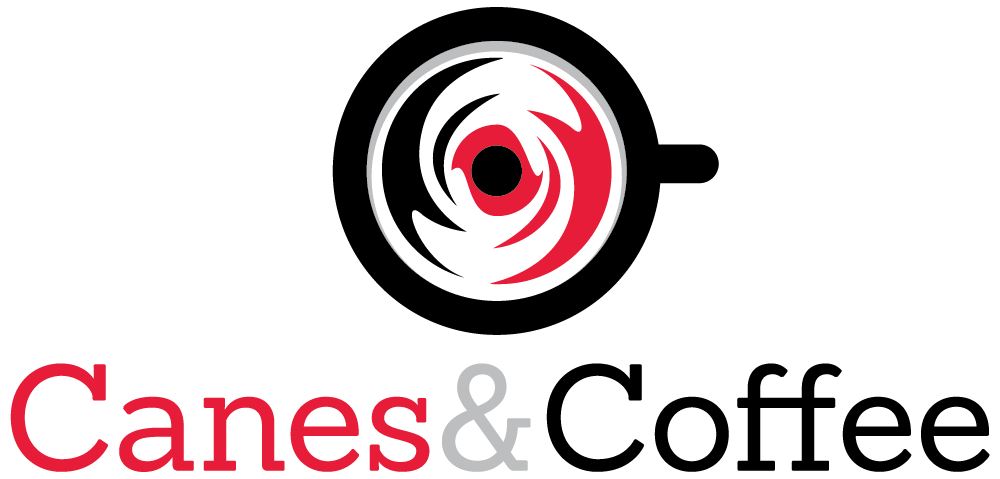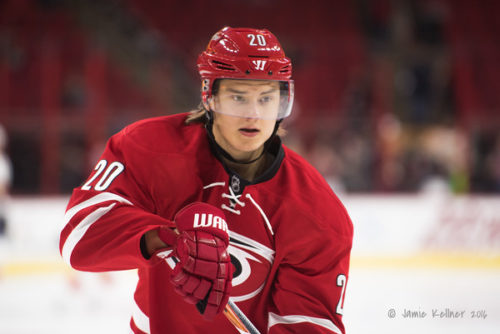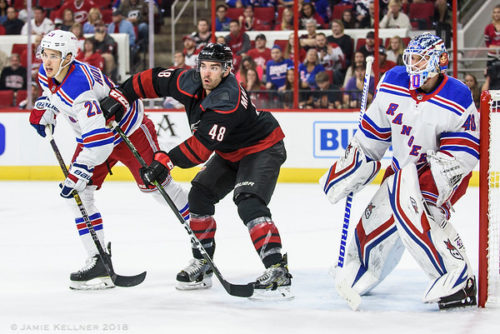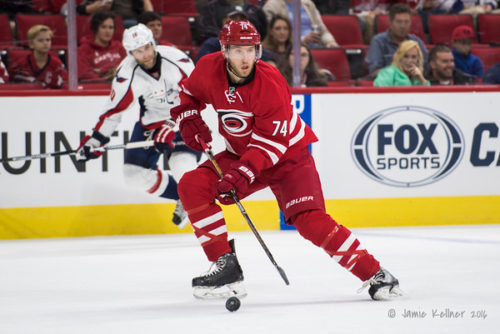When people evaluate general managers, the focus is most often on players added and how they have worked out. Less front and center is evaluating moves to either intentionally let players go or players lost unintentionally.
Today’s Daily Cup of Joe takes a brief step away from the here and now of the current season and offers a less common but in my opinion important evaluation point for Canes management.
Cutting the chase, the returns are early and not final, but the Hurricanes have been incredibly good at making decisions to part ways with players. Consider the track record below since Don Waddell took over as General Manager.
Jeff Skinner
Arguably the biggest and most controversial move made in the past couple years was to part ways with Jeff Skinner prior to his contract ending despite getting very little in return because of Skinner’s leverage with a full no-trade clause. Skinner was an elite offensive player pretty much from day one as an 18-year old rookie, but even years later he never really rounded out his game past putting the puck in the net. He was a plus player at even strength by a modest three-goal margin in his rookie season, but in nine seasons since then, his team has never outscored the opponent with him on the ice at even strength. His trade was a controversial one because he was an affable fan favorite and also because the Hurricanes received very little in return for him. As I said on Twitter recently, the win in that trade was avoiding Skinner’s next contract. He hit the ground running with 40 goals in the last season of his previous contract with the Sabres. That season earned him a shiny 8-year contract for $9 million per year. After plummeting to 14 goals and 23 points in 59 games in the contract’s first season, the remaining seven years that take him to age 35 and has $64 million remaining looks very risky at best.
Justin Faulk
The other big departure from the recent core was Justin Faulk. The Canes seemed willing to deal to keep Faulk, but when the sides did not meet in the middle, he was dealt to the Blues before the last year of his previous contract. In the deal, the Hurricanes received Joel Edmundson whose Hurricanes time was short-lived but productive. Had the Hurricanes not had Edmundson to step into the top 4 when Jake Gardiner struggled through the first half of the 2019-20 season, would they still have made the playoffs? Maybe not. The Hurricanes also received prospect Dominik Bokk who will make the move to North America to play in the AHL this season. But just like with Skinner, the win here might again be just avoiding the next Faulk contract. Faulk re-signed with the Blues before his initial contract was up. That contract starts this year and extends seven years until Faulk is 36 years old and costs $6.5 million per year. As a player who has already played at the edge of being quick enough, the last few years of that contract look incredibly risky. In addition, his scoring which has offered upside for his game seemed to evaporate with only five goals and 16 points in 69 games with the Blues for 2019-20.
Micheal Ferland
After arriving via the trade that sent Noah Hanifin and Elias Lindholm to Calgary in return for Dougie Hamilton, Ferland brought a needed physical element to the Hurricanes lineup and also a decent power forward scoring touch. Especially early in the season when Ferland was meshing well with Sebastian Aho and Teuvo Teravainen as a finshing power forward, he seemed destined to be with the Hurricanes for the long haul. But his scoring slowed in the second half and recurring concussion issues came into play just as it might have been time to negotiate a new contract. Talks seemed to stall quickly and even when his asking price seemed to drop during the summer, the Canes seemed to be completely out of the mix. Ferland signed a four-year contract for $3.5 million per year with the Vancouver Canucks. He played only 14 games in the first year of that contract and is again on long-term injured reserve to start the 2020-21 season with concussion issues that are long-term. $10.5 million for three more years of Ferland has the potential to yield nothing if he is unable to return.
Calvin de Haan
Calvin de Haan was part of the first wave of loading up on defensemen when Don Waddell took over as general manager. De Haan arrived shortly after Dougie Hamilton was acquired via trade to give the Hurricanes five top 4-capable defensemen. My expectation at the time was that de Haan was acquired to make it possible to move Faulk via trade, but Faulk did not depart until the next off-season. De Haan had a strong season and contributed to the Hurricanes push up into the playoffs for the first time in a decade. But his season was cut short when he injured a shoulder late in the year. As with Ferland, the injury was a recurring one. Seemingly because of the injury risk, the Hurricanes parted ways with de Haan sending him to the Blackhawks. As with a couple of the other deals, the return was modest and stirred up some grumbling in Caniac circles. But also like the others, I think the aim was not maximizing return, which is hard to do for an injured player anyway, but instead avoiding risk. De Haan managed only 29 out of 70 games after reinjuring the same shoulder. He is healthy and has played both of the Blackhawks game in 2020-21 but nevertheless that contract has heightened risk just like the others.
Scott Darling
After a tough couple years that saw him collect a 15-25-9 record and find his way to the AHL after signing a four-year $16.6 million contract, he seemed destined to either be bought out or ride out the last two years of his contract in the AHL. Instead, Don Waddell managed to pull a Houdini swapping him for a somewhat similarly positioned James Reimer who was on the outs with the Panthers. Darling was immediately bought out by the Panthers (they saved some cost versus instead buying out Reimer), and Reimer posted a 14-6-2 record in helping the Hurricanes earn their second straight playoff berth.
The math
Had the Hurricanes kept/re-signed these players, the current roster would have $27.7 million (roughly 1/3 of the current salary spent) committed to these five players for the 2020-21 season.
I cannot imagine trying to cut that amount from the current roster and still having a team on par with the current one.
The Hurricanes do have a couple potentially problematic contracts on the books, but with regard to high stakes choices in terms of re-signing high end players or keeping/re-signing players with significant injury risk, the team has nailed it over the past few years.
What say you Canes fans?
1) How significant would the roster downgrade be if the Hurricanes had to fit under the salary cap with these five contracts still on the books?
2) What are your thoughts on the statement that who teams do not sign/re-sign is as important as who they do sign in a salary cap world?
Go Canes!




We avoided the higher priced contracts/ riskier contracts you mentioned.
Then the management team got wooed by analytics and we are stuck with Skjei, Gardiner, and Dzingel and their “valued based deals.”
We still have to play cap carousel.
1) This is not an all-or-nothing scenario. It is hard to imagine a world where the Canes signed Skinner as a UFA, especially to $9M AAV. So it really comes down to the others on the list.
As I understand it, Florida instigated the Reimer/Darling swap as they wanted some extra cap space to pursue both Bobrovsky and Panarin. Matt, I think even you and I would have accepted. So calling Waddell Houdini is hyperbole.
Allowing Ferland to walk was a great decision. Many fans wanted to re-sign Ferland arguing that he made the Canes tougher. So I give full credit to the front office.
As to de Haan/Faulk, you realistically have to acknowledge that the $11M they earn has been replaced by $9.3M for Gardiner and Skjei. So the jury should still be out. But one of the things that needs to be factored in is that the Pesce/Faulk pairing was better than Slavin/Hamilton for the 30 or so games they were together. I think the calculus rests pretty much on whether de Haan can play full seasons the next few years. Because there is a reasonable case that Slavin/Hamilton, Pesce/Faulk, de Haan/Fleury is worth the extra cap space over the current D configuration.
2) That statement is true, but incomplete. It is also just as important who clubs sign and trade. If Trocheck ends up being a 45-point 2C, at $4.75, that is a significant expense—more so given that he basically cost 3 cost-controlled centers (Wallmark, Roy, Luostarinen).
One action that the front office gets an A+ for is the Teravainen contract. That is amazing value.
Skinner: Currently a $9M per fourth liner for Buffalo. Jeff Skinner is entertaining, but a losing hockey player. He plays Jeff Skinner hockey, not team hockey. Should have unloaded him long ago.
Faulk: Nice player, but not worth big money as we are seeing in St. Louis. You can’t blame Faulk for signing that deal, but his game is on the decline.
Ferland: The guy was damaged goods by December. Apparently the Canes offered him a nice deal in November, that Ferlands team turned down. Canes dodged a bullet there.
DeHaan: Good player, but something was up with him. I saw him out during the playoffs with friends at a time I thought was very odd. He also made a twitter comment about the Canes last year that wasn’t so nice. Think the parting was mutual.
Darling: That was a Francis move. Awesome that they were able to get rid of him. Friendly guy, but made it out like the Canes were at fault on Spitting Chicklets. Sounds like he may need a few mirrors in his house.
All those moves were well done by Waddell. Free Agency? That’s another story. Dundon seems to be too involved here. Gardner signing was a F. He’s not good, has never been good, and will not be good. He is an “oops” player who has back issues which inhibits his skating ability. If the analytics guy recommended him he should be fired. Dzingel really has no place to play on this team. He’s not a big enough offensive force to be top 6, and isn’t good enough defensively to be bottom 6. Tough spot.
I think the story is still out on Skjei. He’s a talented guy who played his last few years in NY for a terrible defensive team. As you saw in the playoff playins the Rangers forwards can barely spell backcheck, much less do any of it. This puts D men in bad spots, where they make mistakes, and/or try to do too much. Hopefully a year of playing for a solid team, and paired with Brett Pesce, can help him become the player he has the potential to be.